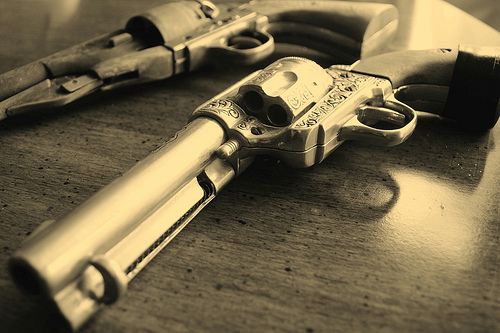On Suicide and Guns
We’ve blogged quite a bit about suicide and put out an hour-long podcast on the topic. The podcast featured an interview with Matt Wray, a sociologist who studies America’s “suicide belt.” He described the type of American most likely to kill himself:
WRAY: So, yes the Inner Mountain West is a place that is disproportionately populated by middle-aged and aging white men, single, unattached, often unemployed with access to guns. This may turn out to be a very powerful explanation and explain a lot of the variance that we observe. It’s backed up by the fact that the one state that is on par with what we see in the suicide belt is Alaska.
DUBNER: All right, so now you can get a picture of the American who’s most likely to kill himself: an older, white male who owns a gun, probably unmarried and maybe unemployed, living somewhere out west, probably in a rural area.
A new paper (gated) by Alex Tabarrok and Justin Briggs further examines the connection between firearms and suicides. Tabarrok summarizes their findings at Marginal Revolution:
Using a variety of techniques and data we estimate that a 1% increase in the household gun ownership rate leads to a .5 to .9% increase in suicides.* (n.b. slight change in language from earlier version for clarity.)
Even if one thinks that suicides don’t cause gun ownership one might imagine that they are correlated due say to a third factor such as social anomie. We have an interesting test of this in the paper. If suicides and gun ownership were being driven by a third factor we would expect gun ownership to be correlated with all suicides not just gun-suicide. What we find, however, is that an increase in gun ownership decrease non-gun suicide. From an economics perspective this makes perfect sense. As gun ownership increases, the cost of gun-suicide falls because guns are easier to access and as the cost of gun-suicide falls there is substitution away from non-gun suicide.
Put differently, when gun ownership decreases other methods of suicide increase. Substitution among methods is not perfect, however, so when gun ownership decreases we see a big decrease in gun-suicide and a substantial but less than fully compensating increase in non-gun suicide so a net decrease in the number of suicides.
Our econometric results are consistent with the literature on suicide which finds that suicide is often a rash and impulsive decision–most people who try but fail to commit suicide do not recommit at a later date–as a result, small increases in the cost of suicide can dissuade people long enough so that they never do commit suicide.


Comments